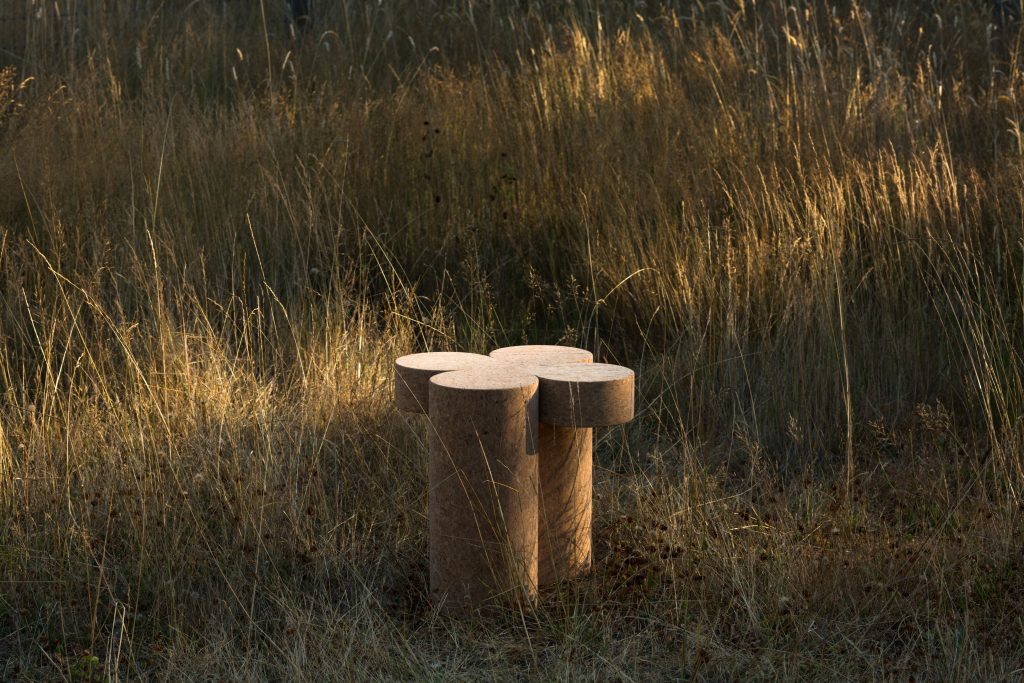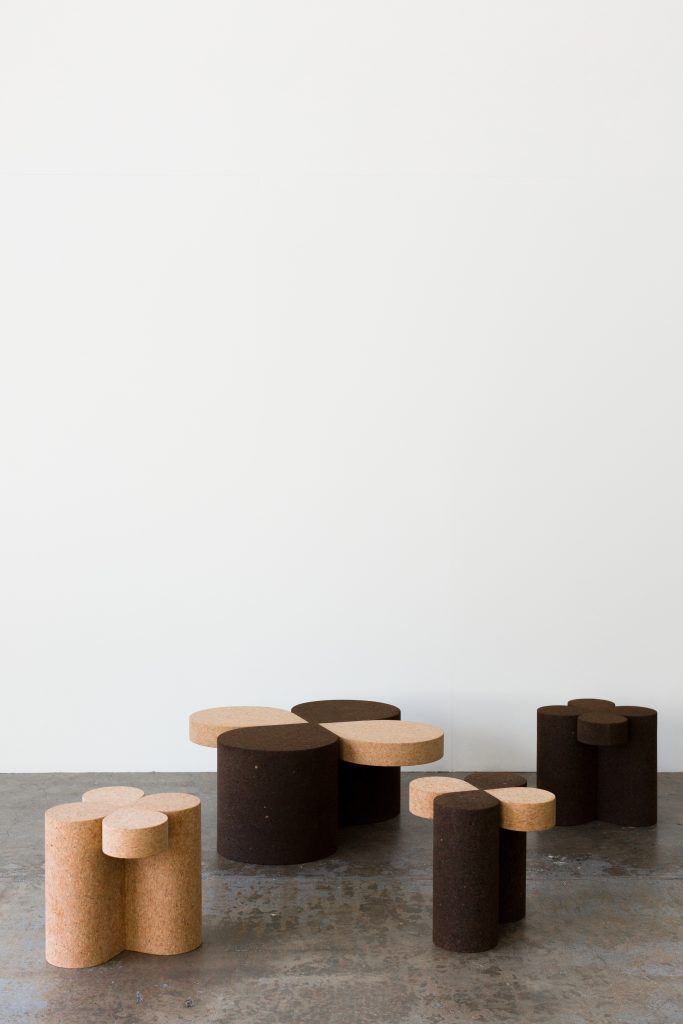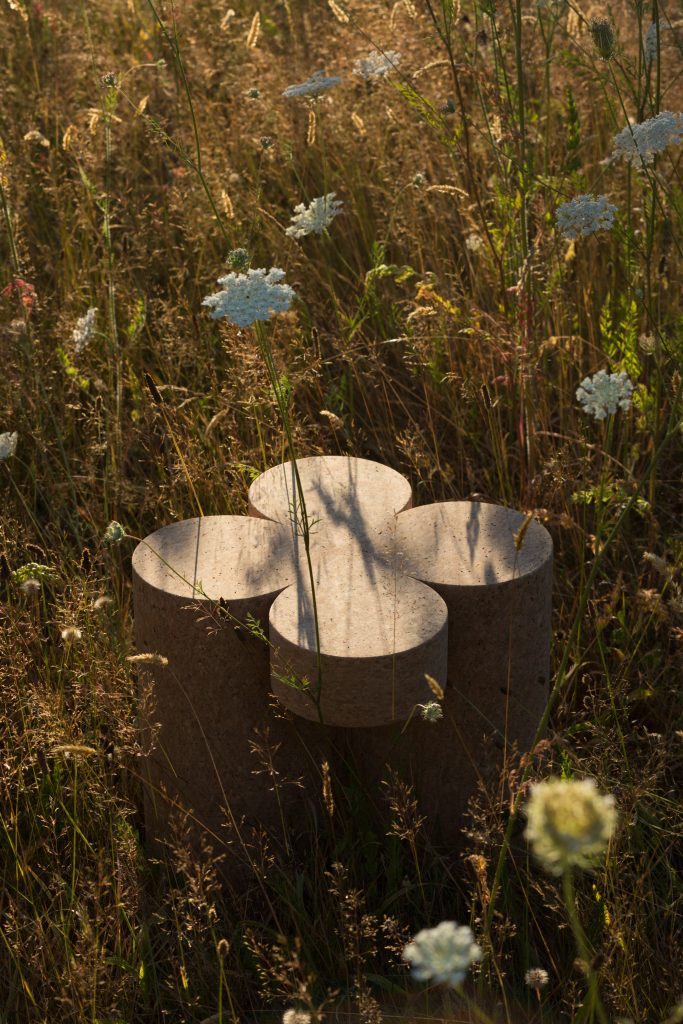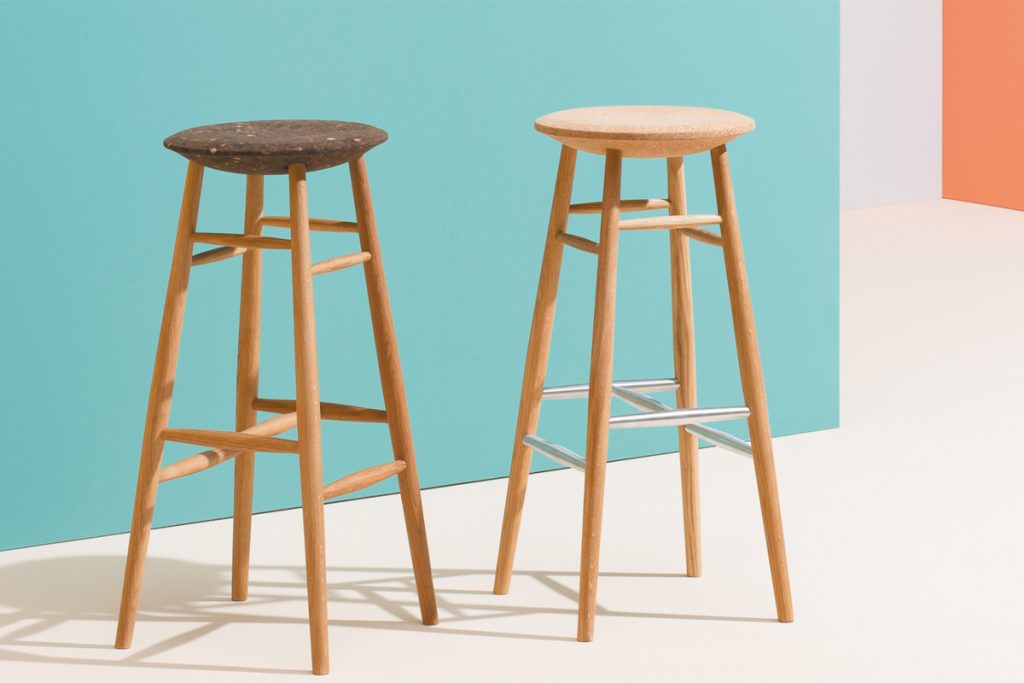Grain’s “Clover” Collection Reveals the Playfulness and Sustainability of Cork
Accountability to the planet lies at the heart of this new range, on view at NYC’s Colony

Comprising a series of floral-shaped side and coffee tables made from renewable and carbon positive cork, Clover is an elegant and playful execution of sustainable furniture—but it’s also much more. Crafted by Chelsea and James Minola’s Washington-based design practice, Grain, and debuting in NYC at Jean Lin’s design co-op, Colony (on display until 30 September), the collection weaves together innovative materials and technological research while paying tribute to nature’s resources. The culmination is an exhibition that harmonizes organic structure and substance.

As a climate neutral, certified B-corp design practice, Grain’s expansion into cork-based pieces feels fitting. Biodegradable and regenerative, the material boasts a bevy of sustainable attributes, as well as functional characteristics that make it ideal for furniture. After researching cork since 2019, Chelsea tells us, “Cork is actually bark from cork oak trees, so when you harvest it you don’t cut down the tree, you just take some of the bark and about every nine years you can harvest more. The cork that we get comes from Portugal, and the ecosystem isn’t disturbed in any way as they harvest the materials.”

Grain works with a family-run cork business, with whom they created a rare dark shade of cork, crafted from discarded grade-B material. In addition to lighter-toned pieces, Clover features “cork that is toasted; kind of cooked to get a dark brown color,” she explains. “When you cut into it, it’s dark all the way through; it’s not just a stain. The manufacturer toasts it as a way of salvaging off-color cork that would otherwise not work for them.”

The contrasting tones allow Grain to work with cork in a way that captures the resource in its fullest expression while also honoring the ecosystem. As the collection reveals, cork lends itself to furniture both functionally and aesthetically. It’s hyper-resilient—thus, can be used both indoor and outdoor—as well as antimicrobial, anti-bacterial, light yet stable, and reparable. As Chelsea explains, “With wood if you scratch the surface, there are things you can do to repair it, but it never really looks right. But with cork if you have a scratch, you can actually use some of the material, break it down, fill it in and sand it. Because it’s a composite already, you can’t tell that it’s been repaired. I love that for the longevity of a piece.”

On the other hand, she says, “It’s just such a beautiful material to work with, because as you cut it and shape it, it has this amazing texture. When you sand it, it kind of feels like velvet and has this beautiful touch.”
While Clover aptly comprises whimsical, floral forms, a closer look reveals more than a four-leaf structure. “They feel fun because they have that clover shape, but when you see it in real life it feels like a lot more monumental, a lot more architectural. It’s because of the material. The cork has little pock marks in it, sort of like travertine, so it almost looks like stone,” she continues.

To make the collection, Grain used a robotic milling arm to cut and shape the cork in their 3,000-square-foot-studio on Bainbridge Island. “James started researching other ways of cutting material and got super-interested in this as an option,” she says. “The cool thing about it is that it can cut in three dimensions, so we’re able to imagine different ways of working with materials that we wouldn’t have been able to before.”

The robot also allows the team to minimize exhausting labor and use their material more efficiently to cut down on waste. As a team of only three, Grain invested in the new machine to help take certain strenuous tasks out of the everyday, allowing them to focus their time instead on hand-finishes. “We think about using tools to make things more efficient. So instead of cutting things on the lathe and then having to hand-shape, which is really taxing on the body, we’ve been thinking about how we can integrate tools that can make this business something that we can also grow into with our own bodies,” she says.

It’s this fusion of robotics and age-old craft that enables Grain to innovate. Whereas tradition and technology are often seen as opposites or binaries, the practice’s methodology uses the two symbiotically to further their creativity and ways that they can be sustainable. “James and I both learned traditional craft techniques at RISD. There’s a real romanticism and beauty in working with material and simple tools,” Chelsea explains. “It’s about wanting to respect the craft material, be really efficient with those things and wanting to respect the humans that work for us and our own abilities over time.”

Like many small companies, Grain dreams of expanding but not necessarily with furniture. Instead, their aspirations reveal how Grain’s ethos lies in conceiving design, manufacturing, craft and technology as, ultimately, a community and sustainable service.
Chelsea tells us, “James is a wilderness first responder. So during the pandemic, he was working in a lot of the vaccine clinics and the testing sites as a volunteer. We know that in the next 10 years, the way that we live together on this planet is going to change a lot. Making furniture may not be what we do with our super studio 10 years from now; it may be serving our community in different ways. We can build up resources now through making furniture and the work that we do so if we do need to pivot to—I don’t know—building temporary structures for people, we’ve set up the skills and the tools that would allow us to pivot in that way.”

Merging tradition with technology, natural materials with organic forms, Grain’s newest collection overflows with a sense of unity. Through an approach to design that is accountable both to quality, the environment and beyond, it’s no wonder the tables in Clover feel immediately warm and inviting.
Images by Ben Blood, courtesy of Grain












